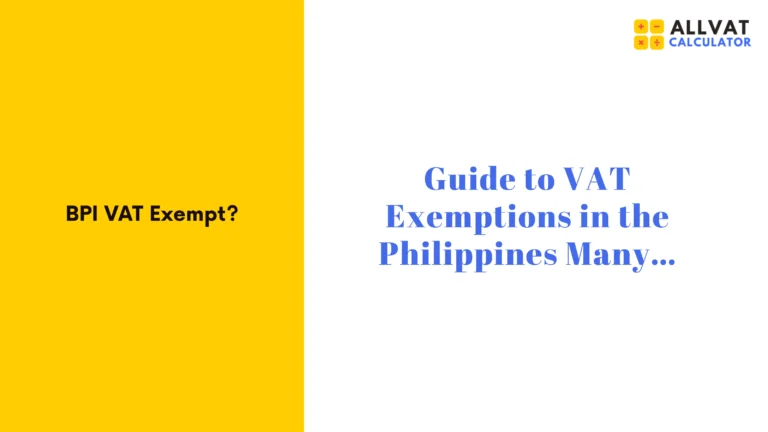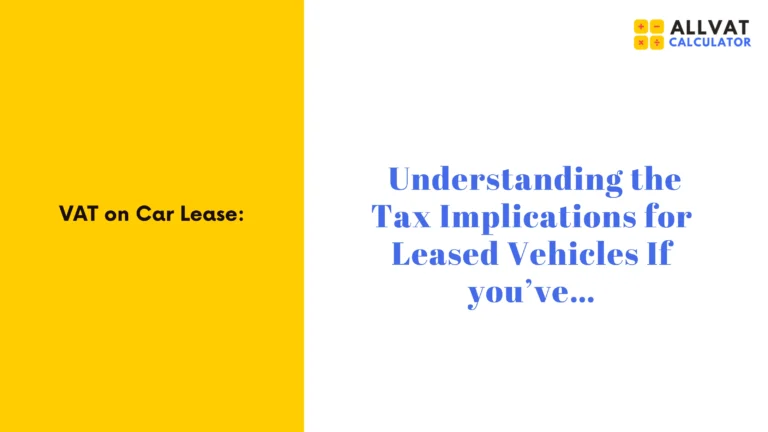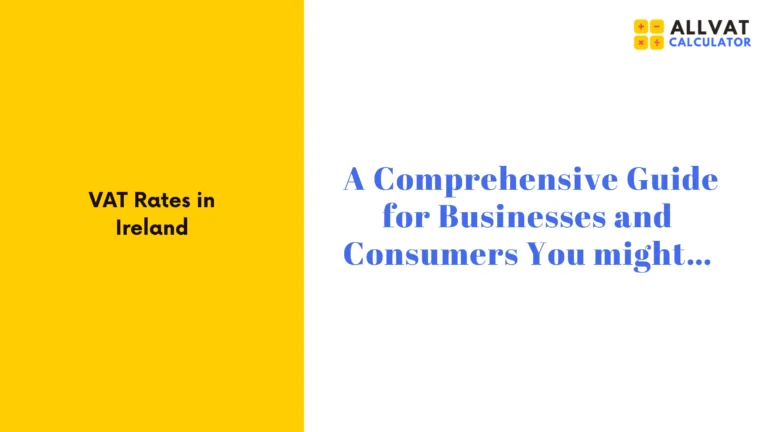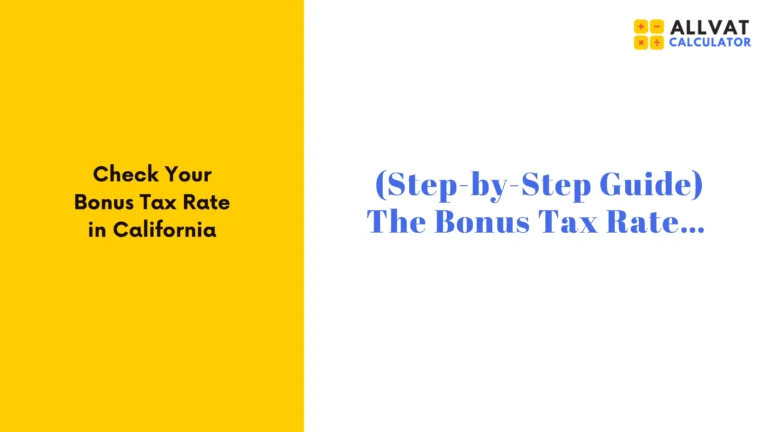Income Tax vs VAT: Philippines Comparison

Taxation plays an essential part in the development of a nation by supplying public infrastructure such as education, healthcare as well as social welfare and security. In the Philippines two of the most important taxation methods include income tax as well as Tax on Value Added (VAT). Both are essential for the generation of revenue, they differ in their structure, effect, and fairness.
This guide will explore each of the tax systems in depth, how they function, their benefits and drawbacks, as well as the way they impact different segments of society. We’ll also look at which tax system is more viable and equitable for the Philippines and its economic future.
Understanding the Basics
What Is VAT?
VAT (Value-Added Tax) is a type of indirect tax that is applied to the selling of services and goods. The tax is imposed at value added “value added” in each step in the chain of supply from production through selling the product to consumers. In the Philippines there is a tax rate for VAT is 12.5% which applies to all goods and services unless they are explicitly exempted or zero-rated in accordance with the law.
Key Characteristics of VAT:
- Payed by the consumer who is ultimately
- The data is collected at every point of sale in the supply chain
- Businesses may make use of in tax VAT to lower their tax liabilities
What Is Income Tax?
The Income Tax is an directly tax that is imposed on the income of businesses and individuals. In the Philippines the tax is an example of the principle of a progressive tax system those that earn higher have to pay more tax.
At the time of last year’s tax reforms,
- Any income that is less than P250,000 per year are tax-free.
- The maximum margin rate available is 35 percent on incomes exceeding P8 million.
- Taxation of businesses is also by net income and different tax rates are applicable to national companies, private educational institutions as well as other.
Comparing the Two Systems
Let’s examine the ways in which each system performs in light of the most important social and economic variables:
| Criteria | Value-Added Tax (VAT) | Income Tax |
|---|---|---|
| Nature | Consumption based tax | Income/earnings based tax |
| Collection Frequency | Indefinitely, at every transaction | Periodic (monthly/quarterly/annual returns) |
| Tax Burden | Flat rate applies to every consumer equally | Progressives: Those with higher incomes pay more |
| Economic Impact | It encourages saving, but it could also decrease consumption | Reduce disposable income and discourage investment |
| Revenue Stability | More reliable is collected with each purchase | The volatility of the market is influenced by economic cycles as well as the level of employment |
| Fairness/Equity | Regressive hurts low-income earners disproportionately | Progressive based on the capacity to pay |
| Compliance Complexity | It requires bookkeeping and VAT filing | Needs to be detailed in income reporting as well as financial audits |
| Administrative Efficiency | Generally, it is easier to make | Needs a stronger tax administration as well as enforcement |
Economic and Social Impact on the Philippines
Advantages of VAT:
- Wide Tax Base In addition, informal sector and people who do not earn income pay taxes when they purchase goods and services.
- Steady Revenue flow: guarantees regular government income, particularly in economies that are driven by consumption, like the Philippines.
- encourages savings: Since it’s charged on consumption, consumers could be encouraged to save money.
Disadvantages of VAT:
- A Regressive Character: Disproportionately affects lower-income groups who spend a higher part of their earnings on goods that are VAT-tax deductible.
- complex refund system: Many businesses face issues when the process of claiming the tax credit on inputs.
- VAT Leakage Numerous exemptions as well as informal transactions and non-compliance with VAT laws reduce collection effectiveness.
Advantages of Income Tax:
- Equitable System It is based around the “ability to pay” principle that ensures those earning more will contribute more.
- Supports redistribution: Can fund social programs, decrease inequality and encourage the growth of all people.
- Facilitates Formalization: Businesses and individuals working in the formal sector contribute in a visible and direct way.
Disadvantages of Income Tax:
- Evasion and Avoidance Individuals and companies with high incomes might not report their income properly or employ tax avoidance strategies.
- Discourages investment: Excessively high tax rates may discourage entrepreneurs as well as foreign investment.
- Administrative Burden Needs a solid and effective tax collection system that is a problem for developing economies.
Realities of the Philippine Tax Environment
- It is believed that the Philippine VAT structure, regardless of its general design, underperforms compared with the other economies in emerging markets. The estimates indicate that the rate of efficiency for VAT much lower than its potential because of loopholes, exemptions, and inefficiencies in the administration.
- On the taxation side of income The TRAIN (Tax Reform to Accelerate and Include) law passed in 2018 provided some relief to lower or middle income earners however, compliance is still a problem particularly among freelancers and self-employed persons.
A Hybrid System: The Most Practical Approach
Why the Philippines Needs Both
Instead of favoring one tax system over another and relying on one tax system over the other, the best solution is combing both tax systems in a strategic way:
- VAT is the foundation in revenue generation specifically for the purpose of funding universal services such as infrastructure, healthcare, as well as education.
- income tax should be utilized to guarantee fairness and justice for all and ensure that those who are wealthy Filipinos contribute to their fair part.
Recommended Reforms:
| Tax System | Recommended Improvements |
|---|---|
| VAT | Reduce exemptions and improve compliance Use digital receipts as well as electronic invoicing Exemptions or subsidies for certain goods. for essential products |
| Income Tax | Make filing simpler and forms Strengthen enforcement and audit tools Increase the tax base while not raising marginal rates |
Final Verdict: A Balanced and Reformed Tax System Is Best
Then, which is the tax on income or VAT more appropriate in Philippines? Philippines?
Response: Neither system is by itself sufficient. Both taxes have important role to play in establishing an healthy, inclusive, and sustainable fiscal climate. If the reforms are done right, reducing the leakage of VAT, easing income taxes, as well as strengthening enforcement and the Philippines can leverage the advantages of both tax systems.
FAQs
Q: Are exempted from the Income Tax?
A: Yes. Any income that is up to P250,000 a year can be tax-free. Deductions are also permitted for personal and business expenses.
Q: Can businesses claim VAT refunds?
A: Yes. Businesses are able to make claims for tax credits for input when it is related to tax-deductible sales in accordance with documentation rules.
Q: What is the impact of VAT on the poor?
A: VAT can be regressive because households with low incomes spend the majority of their income on tax-exempt products. The exemptions for essentials such as rice or utilities, as well as education are designed to reduce this.
Q: What are the current government initiatives to improve VAT and income tax systems?
A: The BIR is moving towards digitalization and increasing the number of taxpayers registered, and closing loopholes in both system. The proposed reforms include e-invoicing and expanded audit capabilities, and more efficient procedures.
Conclusion
There is no way that taxes on income or VAT (VAT) alone can adequately support an efficient and fair fiscal system. Instead an modified, balanced mix leveraging each of the benefits both is the most effective method.
- VAT provides a wide stable revenue base taking in consumption at each step of the supply chain making it particularly robust for financing vital public services such as health and education. However, it can be retrogressive and disproportionately affects households with lower incomes. It also has compliance challenges as well as refund issues, as well as leakage issues.
- income tax In contrast, Income Tax is increasingly designed by balancing the burden of taxation with the ability of taxpayers to pay, making it more equitable and redistributive. It also helps formalize the economy. However, it can be extremely burdensome and vulnerable to fraud, and could hinder investment if it is too complicated or punishing.
The article highlights a dual reform policy to the Philippines:
- To calculate VAT Cut down on exemptions, make modern with electronic receipts and e invoices, and simplify refunds to increase efficacy and fairness.
- To be used for income tax The goal is to simplify filing and enforce, as well as expand the tax base without raising marginal rates.
Final Concluding A system that is integrated where VAT is the foundation for consistent revenue, and income tax assures fairness and accountability is the best way to create a balanced comprehensive, sustainable, and inclusive tax system.
You can also visit: https://allvatcalculator.com/vat-calculator-bangladesh/







